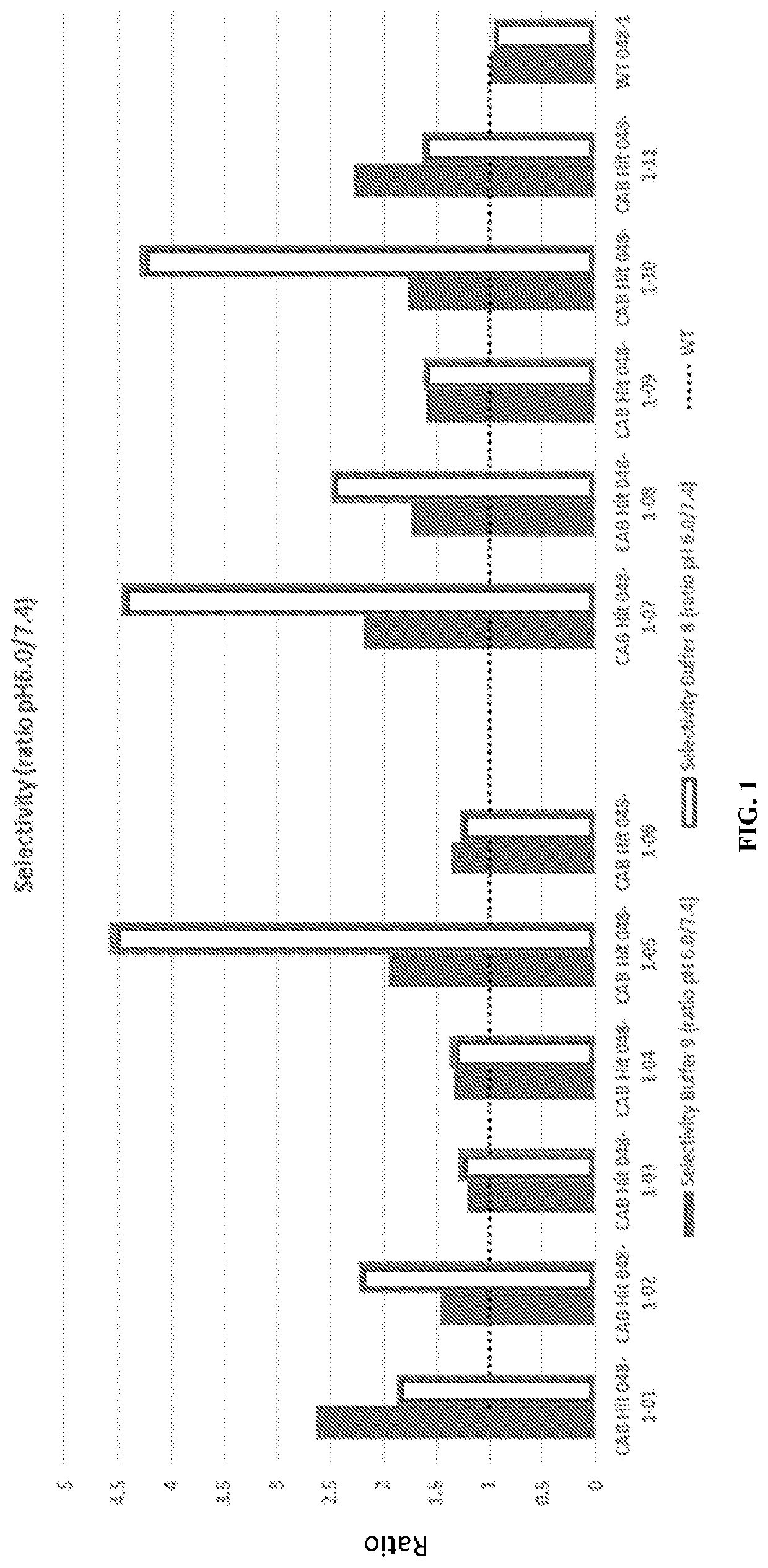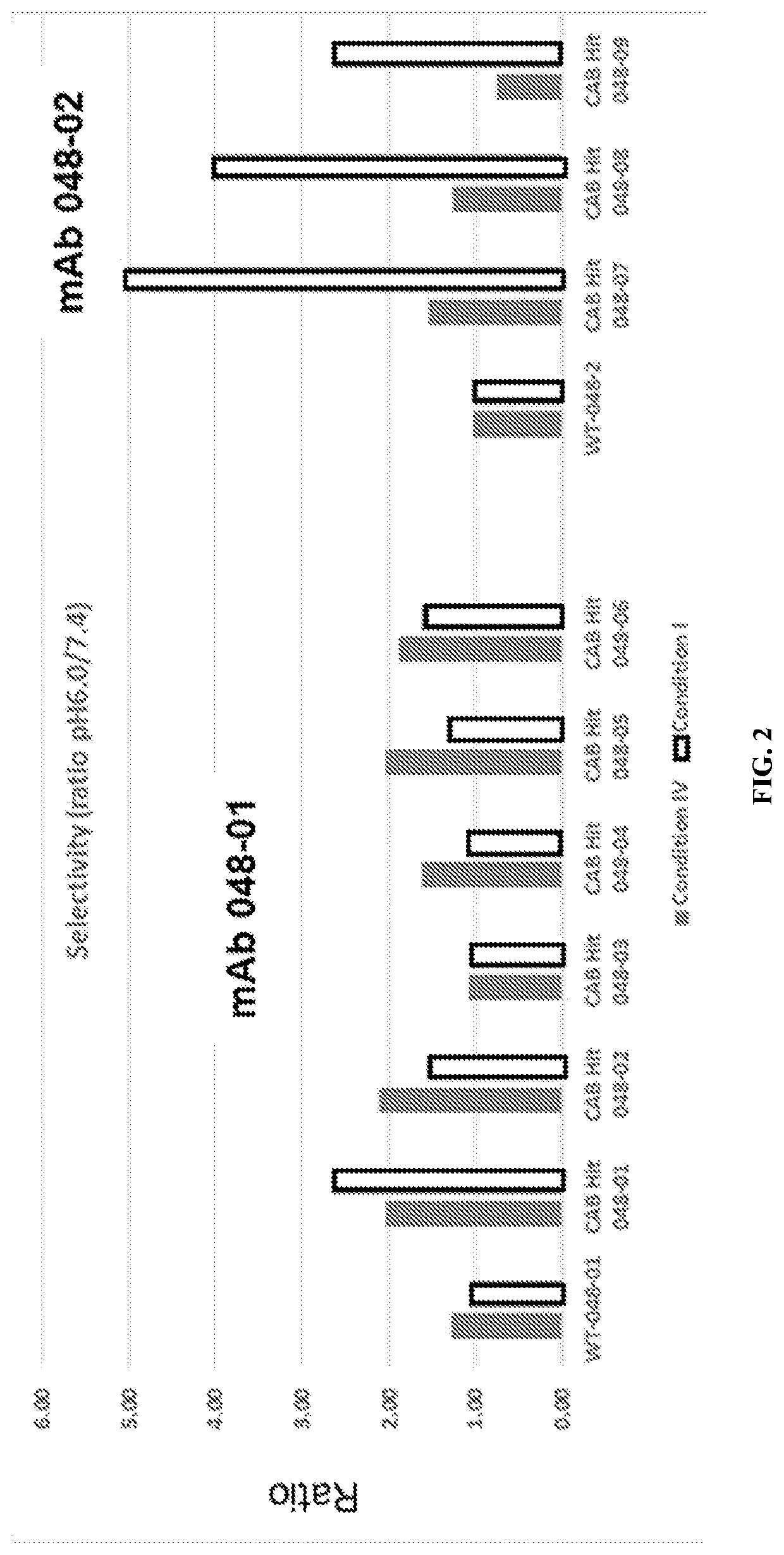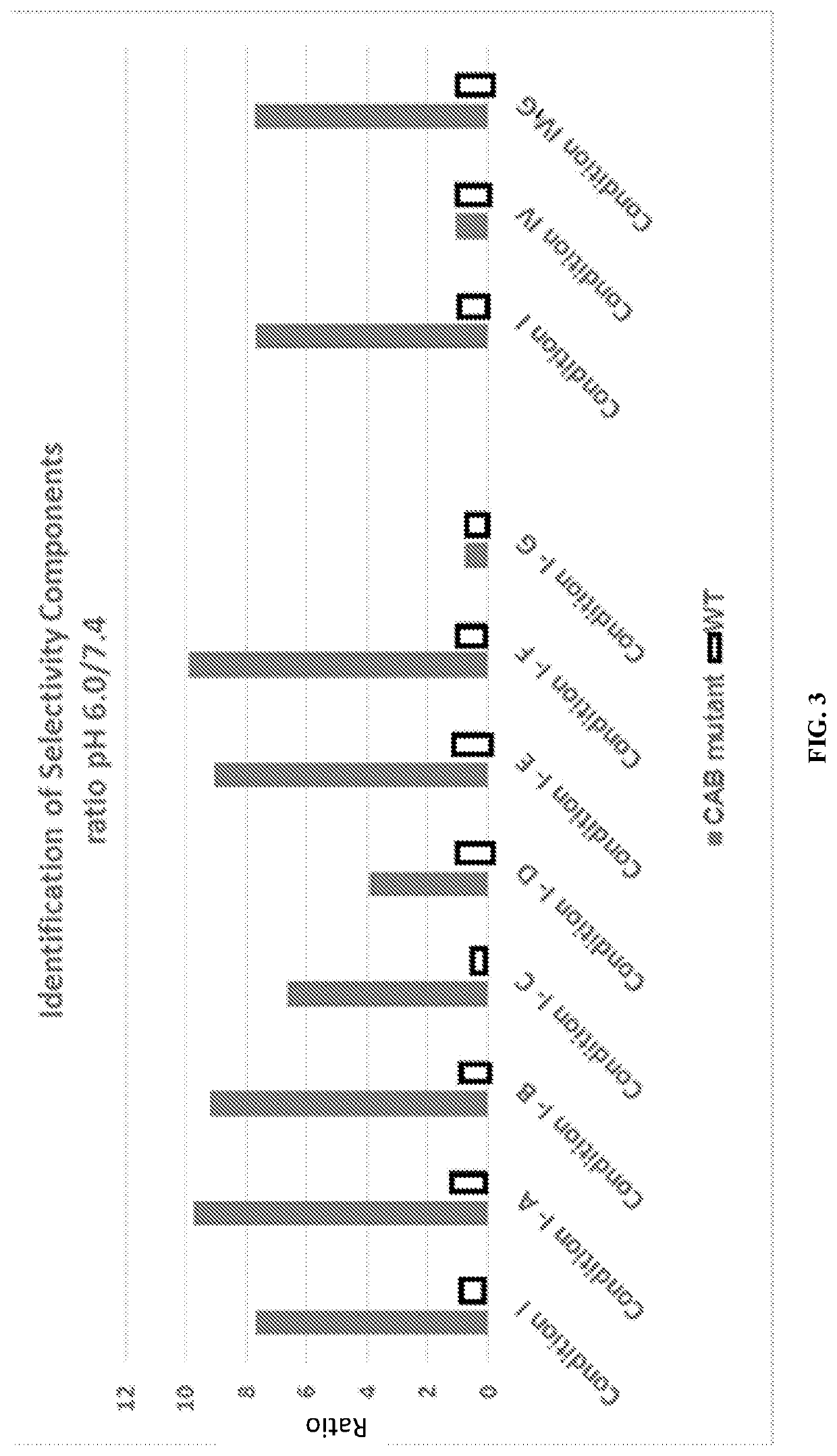Conditionally active polypeptides and methods of generating them
a polypeptide and conditional activity technology, applied in the field of conditionally active polypeptides, can solve the problems of undesirable 5′-3′ exonuclease activity of dna polymerase enzymes, reducing protein activity at normal operating conditions, etc., and achieve the effect of increasing the net charge of the polypeptide and decreasing activity
- Summary
- Abstract
- Description
- Claims
- Application Information
AI Technical Summary
Benefits of technology
Problems solved by technology
Method used
Image
Examples
examples
[0486]Examples 1-5 for making conditionally active polypeptides have been described in U.S. Pat. No. 8,709,755 B2, which are hereby incorporated by reference herein.
example 6
a Light Chain or a Heavy Chain of an Antibody
[0487]The heavy chain and light chain of an antibody F1-10F10 were separately evolved using CPE. The light chain mutants were screened to discover 26 light chain mutants with conditional activity, in this case the mutants were more active at pH 6.0 than the wild-type and the mutants less active at pH 7.4 than the wild-type. The 26 light chain mutants had their mutations at 8 different positions in the light chain 3 of the 8 positions appeared in more than 5 of the 26 light chain mutants. These 3 positions were deemed to be hot spots in the light chain. The heavy chain mutants were screened to discover 28 heavy chain mutants with conditional activity. The 28 heavy chain mutants had their mutations at 8 different positions in the heavy chain 3 of the 8 positions appeared in more than 5 of the 28 heavy chain mutants. These 3 positions were deemed to be hot spots in the heavy chain. The conditional activity of the light chain mutants and heav...
example 7
Conditionally Active Antibodies in a Special Buffer
[0490]Mutant antibodies generated by an evolving step in accordance with the present invention were subjected to an assay at a normal physiologic pH of 7.4 and to an assay at an aberrant pH of 6.0. Both assays were performed using a phosphate buffered saline (PBS) solution including a bicarbonate found in human serum. The concentration of Bicarbonate in the solution was a typical concentration of Bicarbonate in a human serum, i.e. a physiological concentration. A comparative test was done using the same PBS solution without bicarbonate.
[0491]The assay for measuring the binding activity for the mutant antibodies or conditionally active antibodies in this example was an ELISA assay, which was carried out as follows:
1. The pre-day of ELISA: the wells were coated with 100 ul of antibody Ab-A ECD his tag (2.08 mg / ml) antigen at 1 ug / ml with PBS,
3. The buffer solution was flicked off from the 96 well plate coated with Antibody Ab-A-His an...
PUM
| Property | Measurement | Unit |
|---|---|---|
| pH | aaaaa | aaaaa |
| pH | aaaaa | aaaaa |
| size | aaaaa | aaaaa |
Abstract
Description
Claims
Application Information
 Login to View More
Login to View More - R&D
- Intellectual Property
- Life Sciences
- Materials
- Tech Scout
- Unparalleled Data Quality
- Higher Quality Content
- 60% Fewer Hallucinations
Browse by: Latest US Patents, China's latest patents, Technical Efficacy Thesaurus, Application Domain, Technology Topic, Popular Technical Reports.
© 2025 PatSnap. All rights reserved.Legal|Privacy policy|Modern Slavery Act Transparency Statement|Sitemap|About US| Contact US: help@patsnap.com



